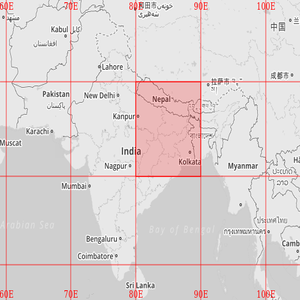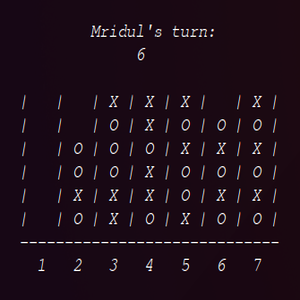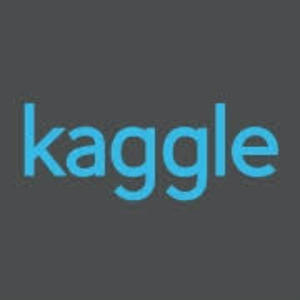GOOGLE
Software Engineering Intern
Working as a SWE intern in Google BLR. My project involves migration of an
internal Google tool name Billy to a new platform. This majorly involves stack
development in Java and design thinking skills.
My project was to migrate an internal Google tool to a different framework as a part of migration from Google Web Toolkit. TO do this I had to study boq, guice, proto buffers, apps framework, promisegraphs and many more new technologies used by google. My work involved creating an independent server which is currently running in production.
AICrowd
Software Developer Intern
CrowdAI enables data science experts and enthusiasts to collaboratively solve real-world problems, through challenges.
I am working as a web developer to solve some issues with the web app, as well as revamp the application as a whole. This involves mainly working with the MVC structure of rails 5 and deployment on heroku.
I am mainly responsible for creating a rating algorithm as well as redesigning the whole web application.
Controversy Score for YouTube Videos
Freelancer
Understanding controversies in online news is crucial for journalists, online social networks, and policy makers. In this research, we present a new metric, Controversy Score, for detection of controversial content in social media. The score employs a statistical approach that infers the controversiality of content from the toxicity of its comments, such that the toxicity distribution approximates either an `M' or `U' shaped distribution. We validate the approach using a dataset of 180,733 YouTube comments from an online news publisher. In addition, we build a predictive model to score controversiality of a news story even when its comments are disabled. Our findings suggest that the most engaging videos are also the most controversial ones. Furthermore, a qualitative analysis of the controversial themes suggests that the framing of the story impacts its controversiality.
Google Summer of Code
Intern at PublicLab
This project is an extension of last year's GSoC project. In this summer I have added various new functionalities to the existing leaflet-blurred-location library and created another library to display locations saved by leaflet-blurred-location in a tricky way so that no information is leaked without the user's permission. This project involved refactoring of the existing code and adding CodeClimate to the repository as well. New UI tools were also added to leaflet-blurred-location along with resolving some previous bugs as well.
For leaflet-blurred-location-display, almost the whole repository was set up and integrated with leaflet-blurred-location to provide a demo. The demo for leaflet-blurred-location-display is live with all the features of leaflet-blurred-location as well.
Thing Trax
Senior Data Scientist
Working as a senior data scientist to create working production models to track man hours for workers working in a factory. This was further extended to check uniform and safety equipment used by the workers. The project majorly involved working with computer vision models and modifying some pre existing techniques to get the desired result we wanted.
The technologies used in this project were python, tensorflow, pytorch, CNN, ANN and parts of Image processing.
Provocativeness of Online News Media
Freelancer
Rating Online Content Based on Toxicity of Its Comments.
There are a plethora of works focusing on detection and classification of online hate. Yet, few studies aim at developing metrics for decision makers to better understand online hate in their social media content.
This research undertakes that challenge and introduces provocation score, a measure for hatefulness of online videos, based on the number and intensity of hateful comments a video receives. Easily understandable metrics and visualizations of the prevalence of hate in different content pieces is crucial for community moderators and content creators when they evaluate how provocative their content is, and plan their production activities.
Abatar
Co-Founder
Abatar helps Celebrities/Influencers to understand and communicate with their audiences personally at Scale. It helps users to make a better social profile with lesser maintenance and hard work. You could get your social profile on all social platforms, and you will be updated/suggested of the things that are going on and what should you be posting. It will predict the number of likes and comments you would receive based on your posts.
We use machine learning to predict all this based on your history. Later versions include posting on your behalf, recommending people to follow, how to increase followers, etc. You can learn more about it here
Automated Face Generation
Freelancer
Creating pictures of faces using Generative models. Working with various conditions such as ethnicity, age, gender to generate faces using stack GANs after preprocessing for Automated Persona Generation. I am using multiple layers in the stack, each layer consisting of generators and discriminators of different dimensions. This idea was taken up by the NVIDIA paper on high resolution face generation, but now we have to do it with conditions on faces.
We focus on feeding face structure, complexion and age as the input features and would get a new face in return. Later stages include Automated Persona Generation where one can build a whole new person profile online using only some input features.
Airline Prediction
Freelancer
Creating a recommender system to suggest the next destination of a passenger with his/her basic information such as age, gender, etc. and some information from the passengers' past flight records. Using LightFM and Surprise algorithms.
LightFM is a Python implementation of a number of popular recommendation algorithms for both implicit and explicit feedback.
It also makes it possible to incorporate both item and user metadata into the traditional matrix factorization algorithms. It represents each user and item as the sum of the latent representations of their features, thus allowing recommendations to generalise to new items (via item features) and to new users (via user features).
Surprise provides various ready-to-use prediction algorithms such as baseline algorithms, neighborhood methods, matrix factorization-based ( SVD, PMF, SVD++, NMF), and many others. Also, various similarity measures (cosine, MSD, pearson…) are built-in.
Our ensemble model proved to give good results with accuracies upto 87%.
Web Scraper
Freelancer
Using selenium to bypass captcha and parsing information regarding property sales in US, on a regular basis. Giving out the output as a formatted csv as requested by the client.
Eye Tracking Prediction
Freelancer
Working as a researcher to write a research paper on eye-tracking data, creating a deep learning model to track eye-movement on some templates and came out with good results and accuracies upto 95%. Other paper included predicting success rate of finnish facebook ads based on appearance of the thumbnails and text in the ad. Potentially might turn into a big project.
Facebook Ad Success Prediction
Freelancer
Working as a researcher to create a deep learning neural network to predict the success rate of a given Facebook Ad. Taking input as the basics of the Ad such as Thumbnail, description, etc. and giving out predictions of number of hits, likes, etc.
SMODEX
Freelancer
Made a few scripts and web crawlers for SMODEX (a startup) to gather some data. Currently working on creating a deep learning NLP model for resume parsing.
Google Summer of Code
Intern at PublicLab
Created a javascript library to add additional features to leaflet maps. Adding a variety of features and integrating them to the main website for publiclab. Future prospects include expanding this library to be used in other organizations as well.
National Informatics Centre
Development Intern
Worked with the UI/UX revamp of the intranet website for the petroleum ministry under National Informatics Centre. Used html and css to build the frontend and javascript for the backend and content managing.




